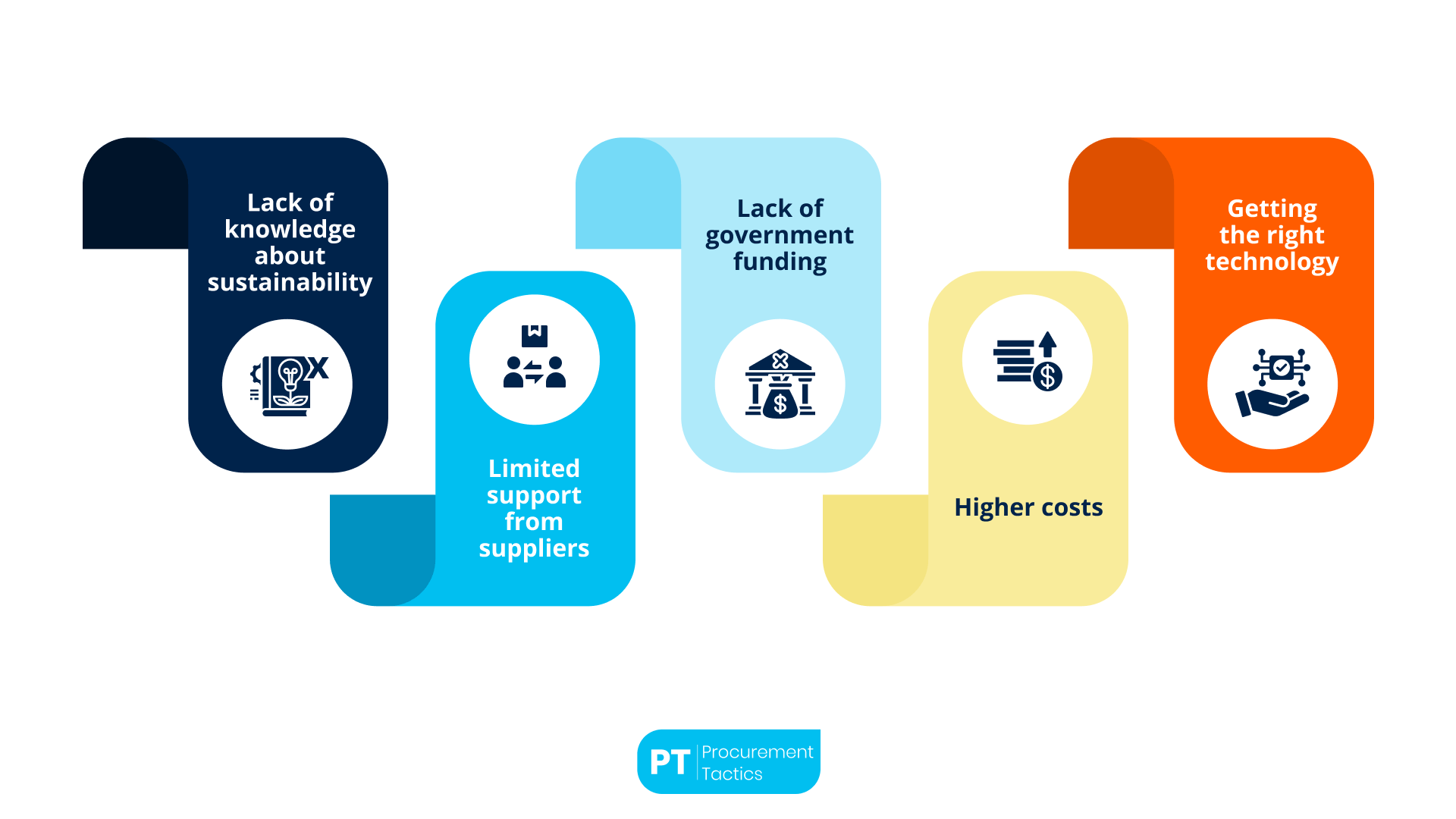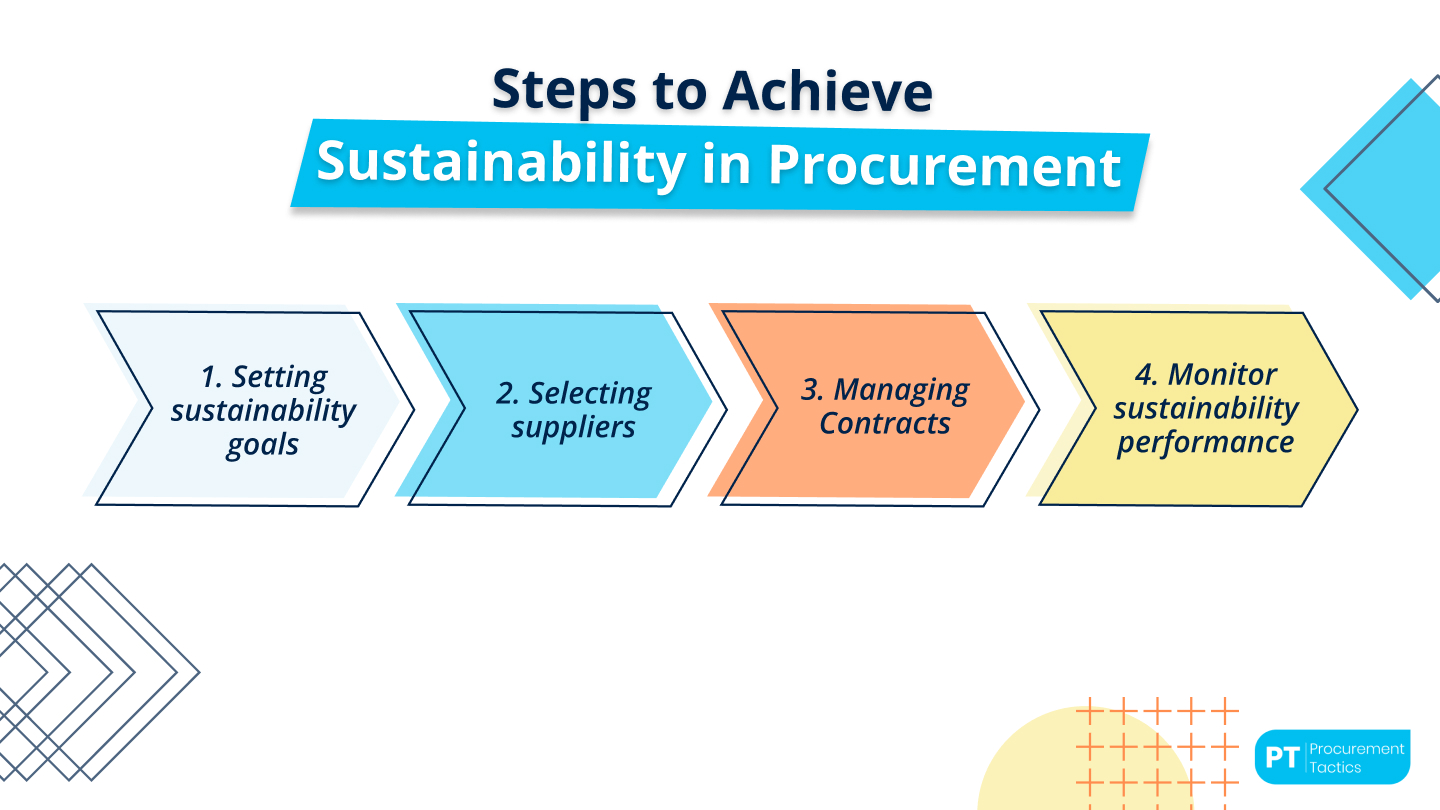ChatGPT & AI in
Procurement Course
Free Preview Lesson

Challenges in Sustainable Procurement in 2025

As taught in the Sustainable Procurement Course / ★★★★★ 4.9 rating
What are the usual challenges in sustainability?
-
Many procurement professionals lack sufficient knowledge about sustainability, making it difficult to implement or measure eco-friendly initiatives effectively.
-
Suppliers may not share the same sustainability goals, making it hard to evaluate or enforce sustainable standards across the supply chain.
-
High upfront costs, limited government support, and difficulties in accessing the right tools or technologies often hinder the shift toward more sustainable procurement practices.
What are the Challenges in Sustainable Procurement?
In my time as a procurement manager, I faced a lot of challenges when implementing sustainability in our procurement process.
In general, for companies and procurement managers, when sustainability is not in the core DNA of the business, the main question when it comes to procuring more sustainability is: how can we take care of our planet and our future generations better, without losing any margin?
However, we will focus for now on the overview of the challenges faced by procurement teams.

1. Lack of knowledge about sustainability
The lack of understanding about sustainability practices in procurement processes is one issue that procurement professionals must deal with. This can occur at any level of the business, from stakeholders who are doubtful of the benefits of sustainable buying to procurement manager teams that do not know where and when to start.
Managers who lack awareness may also struggle to determine how to source resources sustainably or how to assess how environmentally friendly their present procedure is.
The best thing you can do when dealing with a lack of sustainability understanding is to support education and training programs that will educate your team about the value and method of sustainable procurement.
2. Limited support from suppliers
Your teams will need to evaluate and rate the sustainability of your suppliers in addition to your own efforts to achieve a fully sustainable procurement procedure.
Since suppliers are independent entities, they can have different values or resources, and they might not be receptive to trying something new.
3. Lack of government funding
I am sure that many of you might be working with international suppliers. Your experience could vary from nation to nation. Many external elements, such as government funding, cultural support, or even politics, might pose difficulties for sustainable procurement.
In addition, they can also play an important role in deciding how sustainability looks at your organization. Some cultures might be more accepting of sustainability initiatives than others, and they might have stronger political and governmental support for promoting eco-friendly practices.
4. Higher costs
Many procurement departments and businesses are concerned about the cost of transitioning to a new procedure when attempting to use a more sustainable form of procurement.
Almost 38% of businesses experienced cost hikes after making the switch to sustainable buying. However, you must consider it as an investment for the future of your business and the world when thinking about making the switch to sustainable buying practices.
5. Getting the right technology
You might discover that for you to effectively make your efforts environmentally friendly, you will need to have a distinct set of tools or technology when seeking to make the procurement process more sustainable.
Implementing new technologies might be challenging, depending on finance and higher-level internal support.
Nevertheless, this can equip you and your group with specialized knowledge that will maximize your efforts in sustainable procurement and help you develop your career.
Do you want to learn more about how to address these challenges in sustainable procurement? Then try our Sustainable Procurement Course. Our course will teach you how to face these challenges and how you can achieve sustainability in your procurement process efficiently. Enroll now!
The Role of Procurement Teams to Achieve Sustainability in Procurement
Before we tell you the role of a procurement team in achieving sustainability in procurement, we must first discuss what it is.
The procurement team refers to a group of professionals who supervise the acquisition of goods and services needed by the company for its daily operations. It is responsible for managing the procurement process and monitoring expenditures throughout the whole project lifecycle.
Now that we know what it is, we are going to tackle their crucial role in achieving sustainability in procurement. Here are some ways they can contribute to sustainable procurement:

1. Setting sustainability goals
The procurement team can work with other departments of the company to set sustainability goals in their procurement activities.
These goals may include the reduction of carbon emissions, sourcing sustainable products, engaging with sustainable suppliers, and reducing waste.
2. Selecting suppliers
Procurement teams can help the business achieve sustainability in procurement by evaluating the environmental and social impact of potential suppliers before selecting them.
This may include evaluating the supplier’s sustainability policies, adherence to labor standards, ethical business practices, and how they create their products.
3. Managing Contracts
Procurement teams can help by including sustainability requirements in contracts with suppliers. This will ensure that the suppliers that the procurement team has selected comply with all the environmental and social standards.
4. Monitor sustainability performance
Procurement teams must track and report on their sustainability performance to know what areas to improve. Additionally, this demonstrates their commitment to achieving sustainability in procurement.
Procurement teams do not just procure products. They must ensure that all activities in their procurement process comply with their sustainable requirements to ensure that they are still on track to achieve sustainability.
By incorporating sustainability considerations within their procurement processes, procurement teams can help the business to reduce its negative environmental impact, foster ethical business practices, and build long-term value for all stakeholders.
Conclusion
In conclusion, sustainable procurement is an essential aspect of modern business practices, involving the integration of environmental, social, and economic considerations into the procurement process. The procurement team plays a pivotal role in achieving sustainability by setting goals, selecting responsible suppliers, incorporating sustainability into contracts, and monitoring performance.
However, the journey towards sustainable procurement is filled with challenges. These challenges include a lack of knowledge about sustainability, limited support from suppliers, potential obstacles from external factors such as government funding and cultural differences, concerns about higher costs, and the need for appropriate technology.
Despite the obstacles, addressing these challenges is crucial for building robust, sustainable procurement processes that contribute to long-term environmental and social benefits, aligning with the broader goals of responsible and ethical business practices.
Furthermore, I have created a free-to-download, editable Sustainable Procurement Strategy template. It’s a PowerPoint file that can help you assess your sustainability initiatives. I even created a video where I’ll explain how you can use this template.
Frequentlyasked questions
What are the usual sustainability challenges in procurement?
Many procurement professionals lack sufficient knowledge about sustainability, making it difficult to implement or measure eco-friendly initiatives effectively. Suppliers may not share the same sustainability goals, which complicates evaluating and enforcing sustainable standards across the supply chain. High upfront costs, limited government support, and difficulties in accessing the right tools or technologies also hinder the shift toward more sustainable procurement practices.
Why do procurement teams struggle with sustainability knowledge?
Procurement professionals may not fully understand sustainability practices or where to begin integrating them. This lack of awareness can be found at all levels, from skeptical stakeholders to procurement teams unsure about sourcing sustainable resources or assessing their current processes.
Why is technology important in sustainable procurement?
Implementing sustainability often requires new tools or technologies. These may be costly or difficult to adopt without financial and executive backing, but they can provide specialized insights that enhance sustainable procurement efforts.
About the author
My name is Marijn Overvest, I’m the founder of Procurement Tactics. I have a deep passion for procurement, and I’ve upskilled over 200 procurement teams from all over the world. When I’m not working, I love running and cycling.






